
Students determine how culture influences a group of people’s involvement with horses and write a story in response to the video.
- Subject:
- English Language Arts
- Material Type:
- Activity/Lab
- Provider:
- PBS
- Author:
- WNET
- Date Added:
- 04/04/2018

Students determine how culture influences a group of people’s involvement with horses and write a story in response to the video.

Students will read a description and examples of transition words. Students will then read sentences and identify the transition words and phrases. This resource supports English language development for English language learners.

Students will read a description, examples, and explanations of transition words. Students will then read sentences and a word bank in order to write to complete sentences using transition words and phrases. This resource supports English language development for English language learners.

Students will read paragraphs and write to explain what will likely happen next. This resource supports English language development for English language learners.

Students will read a prompt and probing questions in order to write to respond to the prompt. Students will then draw a picture to accompany their writing. This resource supports English language development for English language learners.

In this lesson, students will examine the concept of Manifest Destiny as it relates to the Louisiana Purchase and the Lewis and Clark Expedition through discussion, reading, and the examination of artwork and maps. Students will demonstrate their understanding of this content in a creative writing assignment in which they assume the persona of Meriwether Lewis, William Clark, and/or a Native American and create inferred journal entries.

This presentation is a supplemental resource to the lesson "Manifest Destiny and the Lewis and Clark Expedition." In the lesson, students will examine the concept of Manifest Destiny as it relates to the Louisiana Purchase and the Lewis and Clark Expedition through discussion, reading, and the examination of artwork and maps. Students will demonstrate their understanding of this content in a creative writing assignment in which they assume the persona of Meriwether Lewis, William Clark, and/or a Native American and create inferred journal entries.
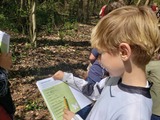
The NC Kids' Exploration Journals are a fun educational tool to help youth explore their communities and natural surroundings! Each journal contains: 18 multidisciplinary activities with guided prompts, 6 lined journal pages for recording observations and reflections, and 4 blank pages for individual creativity.
The digital versions of the journal are designed to be printed out for students either as individual activities or in its entirety so that they can explore their school yard, local park, or own backyard. Though designed for 1st - 5th-graders, older audiences may enjoy them too! They are also available in both English and Spanish languages.
While supplies last, hard copies of the journals are currently available for free to teachers by contacting karen.ipock@ncdcr.gov.

Students will learn about America's first gold rush, which took place in North Carolina in the early 1800s. They will then utilize their understanding of the gold rush and its affect on North Carolina by completing a creative writing assignment.
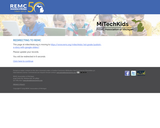
Students will use Google Slides to publish a writing piece by typing their story, adding images to their slides, and creating links for readers to navigate their published book. This activity may take more than one class period.

Students will create a narrative as if they are one particular type of cloud. This task is only intended to engage students in showing their knowledge of cloud types. This resource does not completely cover 5.E.1.2.

This course was created by the Rethink Education Content Development Team. This course is aligned to the NC Standards for 5th Grade ELA.

This course was created by the Rethink Education Content Development Team. This course is aligned to the NC Standards for 5th Grade English Language Arts.

This resource accompanies our Rethink 5th Grade ELA course. It includes ideas for use, ways to support exceptional children, ways to extend learning, digital resources and tools, tips for supporting English Language Learners and students with visual and hearing impairments. There are also ideas for offline learning.
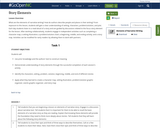
What are the elements of narrative writing? How do authors describe people and places in their writing? From exposure to this lesson, students will gain a clear understanding of setting, characters, problem/solution, and plot. Each day students listen to a read-aloud of a story and are guided by discussions related to the focus story element for the lesson. After working collaboratively, students engage in independent activities such as completing a character map; a setting illustration; a problem/solution chart; a beginning, middle, and ending activity; and a story map. Activities can be modified for early readers by allowing them to work with partners.

In this lesson, students explore how to write from an object’s perspective. The teacher uses a picture book, Dear Mrs. La Rue, to introduce the idea of writing from a non-human’s perspective. A mini-lesson follows in which students work together to define the word "perspective." Students collaboratively write and share a short example of writing from a pencil sharpener’s perspective. Students ultimately write their own stories from an object’s perspective after reading the model story. This lesson takes multiple days as students prewrite, draft, revise, edit, and publish their stories.

A teachers guide for five Jack Henry books by Jack Gantos (Jack Adrift, Jack on the Tracks, Heads or Tails, Jack's New Power, Jack's Black Book), including an activity to complete throughout reading, discussion questions for each book as well as questions to draw connections between themes, and ways to connect themes and key subjects in the books to other areas of education.

In this lesson, students write theme poems using their content knowledge and sensory awareness of a familiar object. Students first learn about the characteristics and format of a theme poem. They then engage in an online interactive activity in which they select a graphic of a familiar object (e.g., the sun, a heart, a balloon), build a word bank of content area and sensory words related to the object, and write poems within the shape of the object. Finished poems are printed and displayed in class.
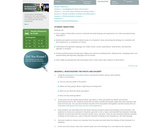
In this lesson, the whole class analyzes a photograph and brainstorms words to describe the characters' senses and feelings. A "hot-seating" drama session follows where classmates interview each other, acting as characters in the photograph, and further exploring the characters' feelings. Students are introduced to the idea of using similes and then work in pairs to describe a character's experience. They then create a simply structured poem using their ideas and similes.
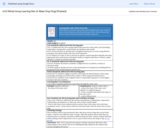
Within this lesson students will pretend to go through the water cycle and then create a story of what it was like from their point of view. They will share their version of events with their classmates through a vlog format.